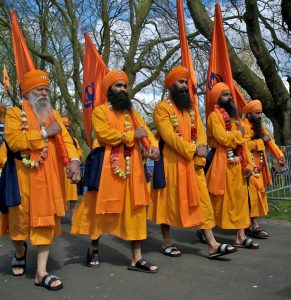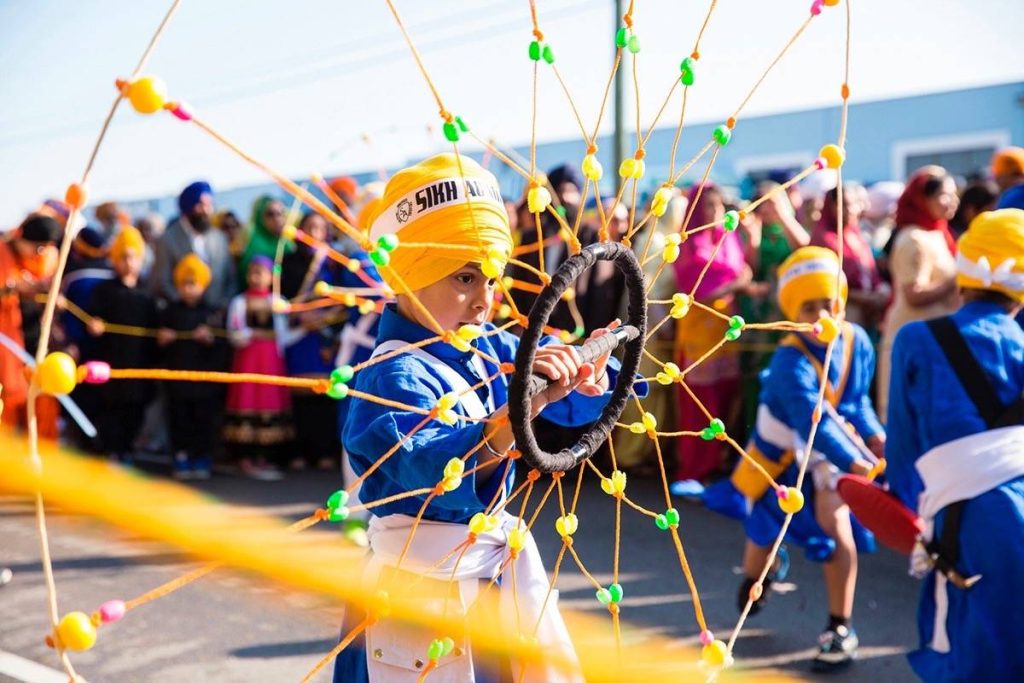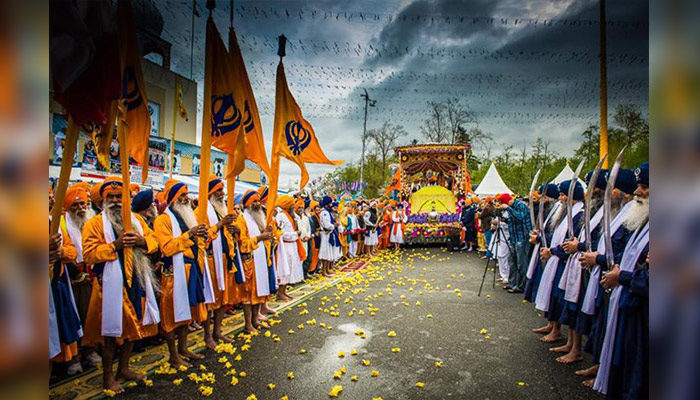What is Vaisakhi
Vaisakhi Da Mela
Vaisakhi, also known as Baisakhi, Vaishakhi, or Vasakhi is a historical and religious festival in Sikhism. It is usually celebrated on 13 or 14 April every year.
What is Vaisakhi
Vaisakhi marks the Punjabi new year. It also marks the Sikh new year (Khalsa era) which commemorates the formation of Khalsa panth of warriors under Guru Gobind Singh in 1699. It is additionally a spring harvest festival for the Sikhs.

Vaisakhi observes major events in the history of Sikhism and the Indian subcontinent that happened in the Punjab region.
The significance of Vaisakhi as a major Sikh festival marking the birth of Sikh order started after the persecution and execution of Guru Tegh Bahadur for refusing to convert to Islam under the orders of the Mughal Emperor Aurangzeb.
This triggered the coronation of the tenth Guru of Sikhism and the historic formation of Khalsa, both on the Vaisakhi day.
Vaisakhi was also the day when colonial British empire officials committed the Jallianwala Bagh massacre on a gathering, an event influential to the Indian movement against colonial rule.
On Vaisakhi, Gurdwaras are decorated and hold kirtans, Sikhs visit and bathe in lakes or rivers before visiting local Gurdwaras, community fairs and nagar kirtan processions are held, and people gather to socialize and share festive foods.
For many Hindus, the festival is their traditional solar new year, a harvest festival, an occasion to bathe in sacred rivers such as Ganges, Jhelum and Kaveri, visit temples, meet friends and party over festive foods. This festival in Hinduism is known by various regional names.
When is Vaisakhi
Vaisakhi is traditionally observed on 13 or 14 April, every year. The festival is important to both Sikhs and Hindus.
The festival coincides with other new year festivals celebrated on the first day of Vaisakh in other regions of the Indian Subcontinent such as Pohela Boishakh, Bohag Bihu, Vishu, Puthandu among others.
History of Vaisakhi
Vaisakhi is one of the three festivals chosen by Guru Amar Das in which Sikhs and Hindus were to congregate and celebrate together (the others being Maha Shivaratri and Diwali).
The alternative view is that Guru Amar Das chose Maghi, instead of Maha Shivaratri.

Subsequent events gave a new meaning to the festival which is, in part, a remembrance of the foundation of the Khalsa Sikh order which started after the ninth Guru Tegh Bahadur was persecuted and then beheaded under the orders of the Mughal Emperor Aurangzeb, after he stood up for freedom of religious practice and refused to convert to Islam.
The guru’s martyrdom triggered the coronation of the tenth and last Guru of Sikhism, and the formation of the sant-sipahi group of Khalsa, both on the Vaisakhi day.
The Vaisakhi festival Khalsa tradition started in the year 1699, as it is on this day that the 10th Guru of the Sikhs, Guru Gobind Singh laid down the foundation of the Panth Khalsa, that is the Order of the Pure Ones, by baptizing Sikh warriors to defend religious freedoms.
This gave rise to the Vaisakhi or Baisakhi festival being observed as a celebration of Khalsa panth formation and is also known as Khalsa Sirjana Divas and Khalsa Sajna Divas The festival is celebrated on Vaisakhi day (typically 14 April), since 1699.
The Birth of the Khalsa Panth was either on 13 April 1699 or 30 March 1699. Since 2003, the Sikh Gurdwara Prabhandak Committee named it Baisakh (Vaisakh), making the first day of the second month of Vaisakh according to its new Nanakshahi calendar.
A special celebration takes place at Talwandi Sabo (where Guru Gobind Singh stayed for nine months and completed the recompilation of the Guru Granth Sahib), in the Gurudwara at Anandpur Sahib the birthplace of the Khalsa, and at the Golden Temple in Amritsar.
Sikh New Year
According to the Khalsa sambat, the Khalsa calendar starts from the

day of the creation of the Khalsa- 1 Vaisakh 1756 Bikrami (30 March 1699).
Accordingly, Vaisakhi has been the traditional Sikh New Year. The festival has been traditionally observed in the Punjab region.
The alternative Nanakshahi calendar begins its year a month earlier on 1 Chait which generally falls on 14 March and begins with the birth year of the Guru Nanak Dev in 1469.
Nagar Kirtan
Sikhs communities organise processions called nagar kirtan (literally, “town hymn singing”). These are led by five khalsa who are dressed up as Panj Pyaare, and the processions through the streets.

The people who march sing, make music, sing hymns from the Sikh texts. Major processions also carry a copy of the Guru Granth Sahib in reverence.
Harvest festival
Vaisakhi is a harvest festival for people of the Punjab region. In the Punjab, Vaisakhi marks the ripening of the rabi harvest. Vaisakhi also marks the Punjabi new year.
This day is observed as a thanksgiving day by farmers whereby farmers pay their tribute, thanking God for the abundant harvest and also praying for future prosperity.
The harvest festival is celebrated by Sikhs and Punjabi Hindus. Historically, during the early 20th century, Vaisakhi was a sacred day for Sikhs and Hindus and a secular festival for all Muslims and non-Muslims including Punjabi Christians.
In modern times, sometimes Christians participate in Baisakhi celebrations along with Sikhs and Hindus.